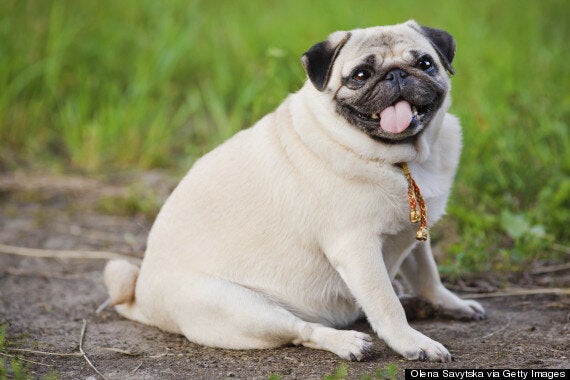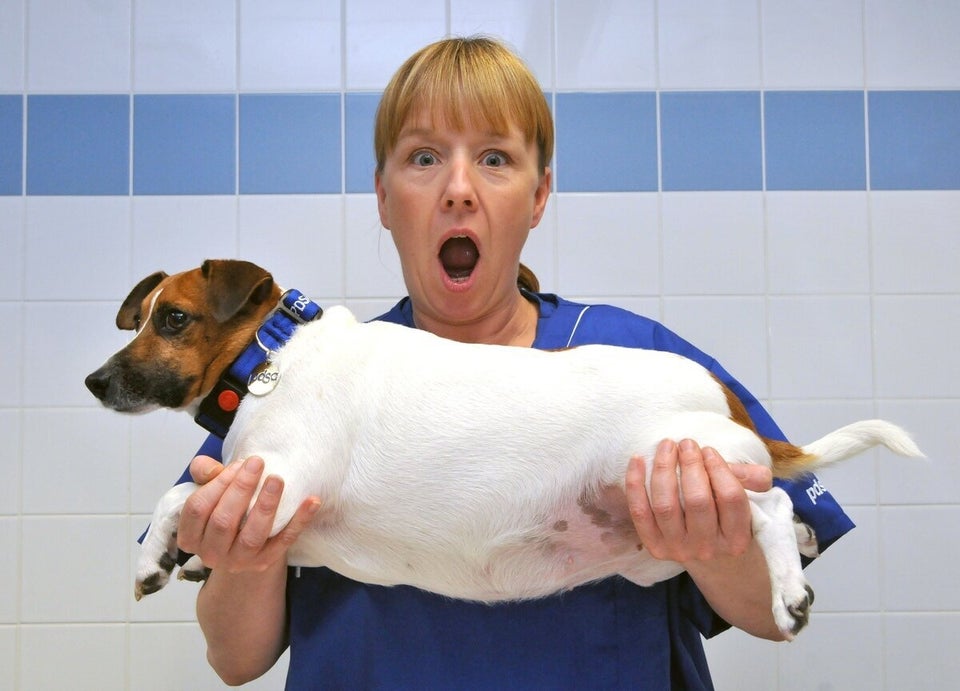Fat cat jokes aside, Britain isn't just in the grips of a human obesity crisis: three in four (77%) vets believe petobesity is on the rise.[i]
Although fat pets seem a lot cuter than let's say, a child, obesity works in the same way: it's life-limiting. However, it's not something owners are taking seriously.
New research by the Pet Food Manufacturers Association (PFMA) reveals two in three (63%) owners feel more important problems face their pets. [ii]

So what is causing our pets to balloon in weight? Vets consider the root causes of pet weight gain to be owners not following feeding guides (72% re cats, 60% re small furries and 28% re birds), treating with leftover food (78% re dogs) and insufficient exercise, particularly for cats (46%), dogs (44%) and small furries (35%).[iii]
As such, the PFMA has launched a Facebook campaign called #GetPetsFit.
Zara Boland, founder of Vet Voice Ltd says: “Overweight pets, like humans, can suffer from a myriad of health issues such as osteoarthritis, cardiovascular disease and diabetes.[iv] There is nothing ‘cuddly’ about an overweight pet. Obesity is a disease in itself.
Story continues below the slideshow:
"It causes discomfort and illness that can result in both emotional distress and financial pressure for owners, and it has also been proven to reduce actual life length.[v] We must continue pushing the pet health message until overweight pets are no longer an increasing and widespread concern.”
New findings from PFMA’s ‘Pet Obesity: Five Years On' report show that although pet owners’ awareness of pet obesity has improved, cause for concern remains – while vets feel up to 45% of all pets they see are overweight (45% of dogs, 40% of cats, 28% of small furries and 15% of caged birds), two in three (63%) pet owners believe their pet is the correct weight. [vi]
The vast majority (93%) of pet owners say they would be concerned to discover their pet is overweight, yet only one in three (37%) know how to check this.
Guidelines
How much should you feed your pet?
Vets advise that treats should be fed occasionally and be taken into consideration at meal times, reducing the regular pet food ration accordingly. Whether consisting of dried, moist or a mixture of these foods, a daily diet suited to a pet’s life-stage and adhering to professional feeding guidelines is the best way to ensure pets receive optimum nutrition.
Worryingly, nearly half (48%) of owners are feeding pets treats more than twice a day, unknowingly putting them at risk.[1]
One in three (36%) pet owners are using ‘human’ food to treat, but such treats are often unsuitable – some healthy human food treats (such as vegetables for dogs) are suitable, but others can be too high in fat and sometimes toxic (such as chocolate, onions and grapes).[1]
Exercise
As with humans, supporting diet with exercise is key in tackling pet obesity. Vets recommend exercise of at least 30 minutes twice daily for adult dogs, forty minutes daily for cats (particularly indoor cats) and four hours daily for rabbits – although the level of exercise required for any pet will also depend on its age, breed and health.
Owners should always seek vets’ advice on this, as – for example – certain dogs may need longer, more vigorous walks.
Encouragingly, nearly one in three (31%) owners currently provide up to an hour’s exercise a day, though there is a serious shortfall for rabbits and birds (with 69% and 78% of their owners believing no exercise is necessary, respectively).
How to seek help
Three in four (78%) UK vets are running obesity clinics with high success rates (49.5%).[vii]
In addition, extensive pet weight management resources – including Pet Size-O-Meters and details of PFMA’s annual Weigh in Wednesday initiative – are available here.
Sources:
[i] London Vet Show survey, Q. 14, 2013
[ii] (Dogs fed to lean condition from puppyhood throughout life can live two more active years) Purina research – Richard D Kealy PhD et al, JAVMA, vol. 220, 2002; Pet Obesity: Five Years On – LM research in association with PFMA, 2014
[iii] London Vet Show survey, Q. 12, 2013; Pet Obesity: Five Years On – LM research in association with PFMA, 2014
[iv] Identification of canine markers related to obesity and the effects of weight loss on the markers of interest, Yamka RM, Friesen KG and Frantz NZ – Intern J Appl Res Vet Med, vol. 4 p. 282-292, 2006; Effects of three canine weight loss foods on body composition and obesity markers, Yamka RM, Frantz NZ and Friesen KG – Intern J Appl Res Vet Med, vol. 5 p. 125-132, 2007
[v] Direct Line Pet Insurance research, 2008; (Dogs fed to lean condition from puppyhood throughout life can live two more active years) Purina research – Richard D Kealy PhD et al, JAVMA, vol. 220, 2002; Pet Obesity: Five Years On – LM research in association with PFMA, 2014
[vi] London Vet Show survey, Q. 6, 2013; Pet Obesity: Five Years On – LM research in association with PFMA, 2014
[vii] London Vet Show survey, Qs. 7 & 9, 2013
[viii] (Dogs fed to lean condition from puppyhood throughout life can live for two more active years) Purina research – Richard D Kealy PhD et al, JAVMA, vol. 220, 2002
